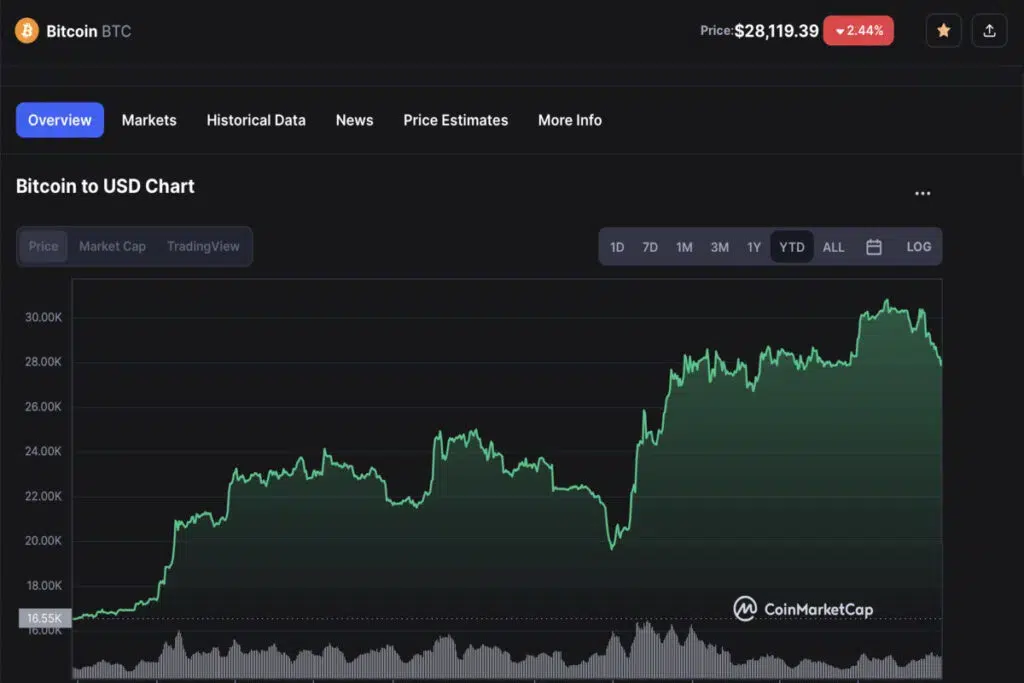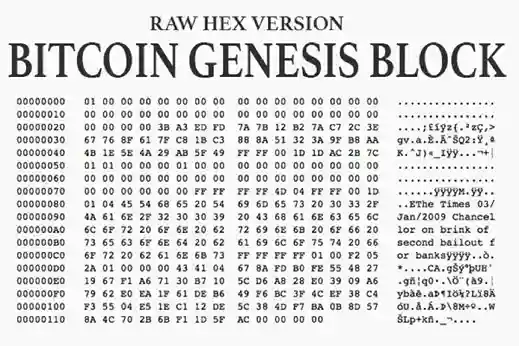Bitcoin and the entire cryptocurrency market have been through a grueling bear market over the past year. Sentiment in the crypto space has deteriorated due to implosions in the ecosystem, such as the demise of FTX and Luna. Furthermore, broader macroeconomic factors such as interest rate hikes and inflation have not only affected global equity valuations but have had a colossal impact on the volatile crypto market. However, Bitcoin has regained its luster over the last few months in the midst of a banking collapse. Turmoil in the TradFi establishment has shone a spotlight on the philosophical underpinnings of Bitcoin as a sound financial alternative to the current status quo.
Bitcoin’s price has surged in the wake of several bank failures, such as Silvergate, Silicon Valley Bank (SVB), Signature Bank, and Credit Suisse. Many speculate that the recent rally is an indication of confidence flowing into Bitcoin’s original thesis as a safer long-term alternative to banks. Others, however, attribute the rally to short-term macroeconomic trends like lowering inflation and potential pauses to interest rate hikes.
The Banking Collapse and Bitcoin’s Thesis as a Safer Store of Value
At the time of writing, Bitcoin’s price has rallied over 70% since the start of the year. Over the past few months, Bitcoin has seemingly decoupled from traditional financial markets with the backdrop of a banking crisis. In fact, it is the best-performing asset class during this period.
Year-to-Date :#Bitcoin : 82%
Nasdaq : 20%
Gold : 9%
S&P500 : 7%
Silver : 4%
Oil (WTI) :4%
Real Estate (VNQ): 0.25%
US 10 Year – 2% pic.twitter.com/m4wOw6WD1E
— Jonathan Hamel (@jhamel) April 11, 2023
While the collapse of Silicon Valley Bank, Silvergate, Signature Bank, and Credit Suisse have rocked the financial world, the banking failures have added fuel to Bitcoin’s core thesis and mission. Many commentators view the recent failures of the legacy system as the catalyst for the rise in the digital asset’s price.
As a result, @yassineARK and the crypto team at @ARKInvest are not surprised that #BTC and #ETH appreciated as US regional bank stocks imploded. Their blockchains are decentralized, transparent, and auditable. Banks are not and, in the last few days, have become less so.
— Cathie Wood (@CathieDWood) March 13, 2023Bitcoin came into existence after the calamity of the 2008 financial crisis. The failure of major financial institutions like Lehman Brothers and Bear Stearns eroded people’s trust in the centralized banking system. It was created in direct response to this loss of trust in the establishment. In fact, the pseudonymous creator, Satoshi Nakamoto, inscribed a message in the genesis block, which read, “The Times 03/Jan/2009 Chancellor on brink of second bailout for banks”. This etched message is often interpreted as a nod to the financial crisis of 2008.

The creation of Bitcoin brought the first implementation of a decentralized peer-to-peer financial system powered by blockchain technology. This was and remains a watershed development as it effectively lets people “be their own bank” by removing the need for intermediaries. Satoshi’s vision of a sound monetary system was required to replace the whims of central banks. It is a trustless and transparent open-source system that eliminates counterparty risk by transferring ownership of value from the hands and decisions of third-party institutions to the hands of the owner.
Fifteen years later, we have come full circle with the recent spate of bank failures. The digital asset was purpose-built to eliminate the exact inherent dangers we have witnessed. It provides an escape pod for people looking to move away from the centralized financial model.
The case for DeFi grows stronger with each example of the failings of the traditional finance status quo.
— Jared Grey (@jaredgrey) March 10, 2023These events are another reminder of the importance of diversification and the risks associated with keeping funds in a bank with a single point of failure. The endemic issues of traditional finance have ironically turned people’s attention to a truly decentralized asset. Therefore, it is not farfetched to interpret the rise in Bitcoin’s price following these events as a sign of growing confidence in the technology’s core mission as a safer store of value.
Macroeconomic Factors as Drivers of Bitcoin’s Price Action
While there is credence to suggest that Bitcoin’s recent price action was influenced by growing confidence in its philosophy, we can’t downplay other financial trends at play. Like any other financial asset, macroeconomic factors greatly direct the price of the digital asset. Moreover, given the volatility of the crypto market, Bitcoin’s price fluctuations are exacerbated by the macro narrative.
Economists and analysts attribute the rally to favorable shifts in global monetary policy. The possibility of the United States Federal Reserve pausing interest rate hikes after a modest reduction in inflation readings has bullish implications for the digital asset.
🌱🌱🌱🌱🌱🌱#Bitcoin vs US Interest rate chart. There is a probability that like in 2018 when we get a pause in the US interest rate, then Bitcoin starts to trend up!
The market is pricing in a FED rate Pause in MAY! Are you ready for a HTF uptrend?#BTC$BTC#Crypto pic.twitter.com/Xc5tRu1W6l
— Seth (@seth_fin) March 30, 2023A publication from Kaiko has also indicated that low liquidity can be another factor that has caused the recent spike in valuation. According to the report, Bitcoin’s liquidity reached a 10-month low amidst the banking collapse, which could explain its recent volatility off the back of positive momentum.
Closing Thoughts
There are many nuances that influence Bitcoin’s price action. Bitcoin and the broader crypto market are driven by several influential factors. Markets are complex, and it is, therefore, fictitious to pinpoint price causality to single-point explanations. That said, it cannot be refuted that the recent episode of banking failures has re-ignited Bitcoin’s narrative as a safer long-term store of value. Amidst these events, the utility of Bitcoin and a decentralized financial model is gaining traction.



















